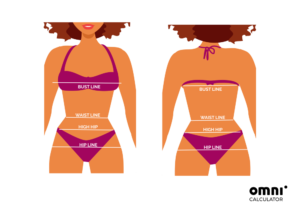Our BEE calculator can help you quickly determine your Basal Energy Expenditure; simply enter all of the required information to get your daily caloric expenditure, which will be displayed in both total and basal energy.
You may now simply match your daily caloric requirements to your meal calorie consumption and other energy-consuming activities.
Hey! For a completely hassle-free experience, our basal energy expenditure calculator allows you to freely adjust its energy parameters and temperature units.
Basal energy expenditure definition
The quantity of energy required to cover all movement and biological functions for an organism to exist for a day, expressed in kcal/day or kJ/day, is known as basal energy expenditure (BEE). This energy demand is most realistic when used to an awake, resting individual in a calm mental and physical condition who is always in a room temperature. The person must have obtained a decent night’s sleep and eaten a meal that was more than 12 hours ago.
The BEE can account for 40-70 percent of overall energy expenditure, depending on the amount of physical activity.
How to use the BEE calculator?
The following four pieces of information are required to determine the basal energy expenditure:
- Gender – the calculation is gender-specific! (We decided to keep things simple and merge the BEE woman and BEE man calculators);
- Age – Keep in mind that this BEE calculator is not meant for children;
- Height; and
- Weight.
If you want to calculate your total energy expenditure (TEE), you’ll need to give the following information:
- Activity level – depends on your lifestyle;
| Bed-ridden | Lying, sleeping, eating |
| Light or sedentary | Sitting (e.g., office work), watching TV, cooking, personal care, driving a car, light walks, typical household duties. |
| Moderate to active | Standing, carrying light loads (e.g., waiting tables), longer walks, light aerobic exercises, commuting by bus. |
| Heavily active | Agricultural work, manual labor, heavy-duty cleaning, strenuous exercises performed on a regular basis. |
- Stress factors – are there any stress factors that could influence your energy expenditure? Think about any comorbidities or traumas and find the category that describes you best; and
- Temperature – do you have a fever? We define a fever as a body temperature that is above 100.4°F or 38°C. Find the temperature that is the closest to yours.
check our other calculator:
- General BMI calculator
- BMI calculator for kids
- BMI calculator for teenagers
- BMI calculator for women
How to calculate BEE?
Because we choose to employ the original Harris-Benedict basal energy expenditure formula for our equations, our BEE calculator might also be dubbed a Harris-Benedict calculator. The following is an example of it:
Version of the metric system:
- Women:
BEE = 655.1 + (9.563 * weight in kg) + (1.850 * height in cm) - (4.676 * age); and - Men:
BEE = 66.5 + (13.75 * weight in kg) + (5.003 * height in cm) - (6.775 * age).
Imperial system version:
- Women:
BEE = 65.51 + (4.35 * weight in pounds) + (4.7 * height in inches) - (4.7 * age in years); and - Men:
BEE = 66 + (6.2 * weight in pounds) + (12.7 * height in inches) – (6.76 * age in years).
TEE calculator
Our built-in total energy expenditure calculator provides a more complete view of your calorie consumption by taking into account more important elements.
TEE = BEE * activity * stress * temperature
The activity, temperature and stress multipliers have different values depending on the clinical scenario. Tables containing all of the values, enumerated and discussed, may be found below:
The activity, temperature and stress multipliers have different values depending on the clinical scenario. Tables containing all of the values, enumerated and discussed, may be found below:
| Activity level | Value |
| Bed-ridden | 1.2 |
| Light or sedentary | 1.53 |
| Moderate to active | 1.76 |
| Heavily active | 2.25 |
| Factor | Value for men | Value for women |
| None | 1.0 | 1.0 |
| Solid tumor | 1.15 | 1.25 |
| Leukemia/Lymphoma | 1.27 | 1.37 |
| Inflammatory bowel disease | 1.11 | 1.12 |
| Liver disease | 1.07 | 1.11 |
| Burns | 1.64 | 1.52 |
| Pancreatic disease | 1.13 | 1.21 |
| General surgery | 1.2 | 1.39 |
| Transplantation | 1.19 | 1.27 |
| Sepsis | 1.33 | 1.27 |
| Abscess | 1.12 | 1.39 |
| Other infection | 1.16 | 1.39 |
| Fistula | – | 1.15 |
| Temperature | Value |
| Normal | 1.0 |
| >= 100.4°F or 38°C | 1.1 |
| >=102.2°F or 39°C | 1.2 |
| >=104°F or 40°C | 1.3 |
| >=105.8°F or 41°C | 1.4 |
check our other calculator:
- General BMI calculator
- BMI calculator for kids
- BMI calculator for teenagers
- BMI calculator for women
F.A.Q
What is basal energy?
The quantity of energy required to maintain all of a live organism’s essential functions* is known as basal energy. When characterizing the demands of an aware, resting individual in a calm mental and physical state and under good temperature circumstances, this energy need is most realistic.
How to calculate BEE?
The Harris-Benedict equation, which is a single, straightforward formula, may be used to compute BEE (Basal Energy Expenditure). Depending on the metric/imperial system and the patient’s gender, this equation has several forms.
Metric system versions:
- Female:
BEE = 65.51 + (9.563 * weight in kg) + (1.850 * height in cm) - (4.676 * age). - Male:
BEE = 66.5 + (13.75 * weight in kg) + (5.003 * height in cm) - (6.775 * age).
Imperial system versions:
- Women:
BEE = 65.51 + (4.35 * weight in pounds) + (4.7 * height in inches) - (4.7 * age in years). - Men:
BEE = 66 + (6.2 * weight in pounds) + (12.7 * height in inches) – (6.76 * age in years).
What is a factor that lowers basal metabolism?
⬇️ Factors that lower basal metabolism include:
- Advanced age;
- Being female;
- Diet low in iodine;
- Low level of thyroid hormones (hypothyroidism);
- Low muscle mass;
- Obesity;
- Starving or fasting for a longer period of time; and
- Being shorter.
What is a factor that raises basal metabolism?
⬆️ Factors that raise basal metabolism include:
- Young age;
- Being male;
- Pregnancy;
- Lactation;
- Regular exercise (increased muscle mass);
- Caffeine or nicotine (coffee & cigarettes);
- High level of thyroid hormones (hyperthyroidism);
- High level of mental stress;
- High muscle mass; and
- Being taller.
How is basal metabolism related to calories?
The relationship between basal metabolism and calorie consumption is straightforward: the greater your basal metabolism/energy expenditure, the more calories you should eat.
To put it another way, increasing your basal metabolism can help you lose weight (or allow you to consume more without gaining weight).
What’s the difference between basal and total energy
The fundamental, resting metabolism of a human is depicted by basal energy expenditure, which is dependent on relatively constant parameters (e.g., height, sex, and weight). Total energy expenditure, on the other hand, describes our physical activity as well as all of the transitory states that may influence our energy use (e.g., infection, pregnancy, and sedentary or active lifestyle).
Total energy expenditure provides a more comprehensive view of your calorie requirements.
Does basal metabolic rate change?
Over the course of your life, your basal metabolic rate will alter. You require more energy to grow as a youngster, and your muscle mass is normally well-developed at that age. All of these things raise your basal energy expenditure in your youth and progressively lower it as you become older.
At any age, you may boost your energy consumption by:
- Regular physical exercise;
- Healthy and regular meals;
- Avoiding obesity; and
- Regulating your hormone levels when they are low.
What is total energy expenditure?
The total amount of energy expended by your body during the day is referred to as total energy expenditure (TEE). TEE is calculated by multiplying your Basal Energy Expenditure (BEE) by the factors that might affect your energy demands, such as:
- Physical activity;
- Body temperature; and
- Stress.
How to calculate TEE?
TEE (Total Energy Expenditure) is calculated by multiplying BEE (Basal Energy Expenditure) by the several elements that influence our basic energy usage. The following is the general equation:
TEE = BEE * activity * stress * temperature
Multipliers take different values, e.g.,
| Activity level | Value |
| Bed-ridden | 1.2 |
| Light or sedentary | 1.53 |
| Moderate to active | 1.76 |
| Heavily active | 2.25 |
What is the unit of basal energy expenditure?
BEE (Basal Energy Expenditure) is measured in a variety of ways:
- Kilocalories per day (kcal/day);
- Calories per day (cal/day) = 0.001 kcal/day;
- Kilojoules per day (kJ/day) = 0.239 kcal/day; and
- Joules per day (J/day) = 0.000239 kcal/day.
What is a normal BEE for a man?
A man’s normal Basal Energy Expenditure (BEE) ranges from 1600 to 1800 kcal. Women often require less energy than males, with a median BEE of approximately 1500 kcal.
What is the typical daily caloric expenditure?
The average daily calorie consumption is between 2000 and 2500 kcal. Your minimal caloric consumption, on the other hand, is often less than 1800 kcal.
How can we use the Basal Energy Expenditure (BEE)?
Basal Energy Expenditure (BEE) can be used as a:
- Basic measurement of how much we should eat within a day to lose or gain weight.
- In-hospital estimation of the caloric expenses of a patient that needs to be fed through a tube or blood system.
check our other calculator:
- General BMI calculator
- BMI calculator for kids
- BMI calculator for teenagers
- BMI calculator for women


